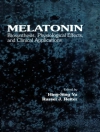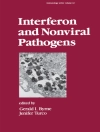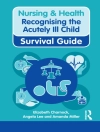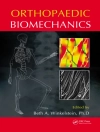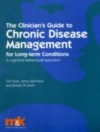<P>In rare cases of stroke in children and youths, a likely cause is the idiopathic disease moyamoya, characterized by the slow and progressive stenosis and occlusion of the internal carotid artery and the arteries of the circle of Willis. A result of these stenoses is the formation of collaterals that are typically small and fragile, and liable to rupture.</P> <P>While there is no cure for moyamoya, a variety of surgical procedures can be performed to reestablish and maintain adequate blood supply to the affected brain areas. The procedures described here include various revascularization techniques and recommended bypasses.</P> <P><STRONG>Key Features:</STRONG> <UL> <LI>With contributions from the world’s most renowned bypass surgeons</LI> <LI>Perioperative management and considerations</LI> <LI>An overall practical approach to this painstaking high-end surgery</LI> <LI>Detailed criteria for analyzing the situation and choosing the appropriate procedure</LI> <LI>General principles of bypass surgery, direct and indirect revascularization, and combined revascularization techniques</LI> <LI>Step-by-step descriptions of these procedures</LI> <LI>Rescue strategies when repeat surgery is necessary</LI></UL> <P></P> <P>Surgical Techniques in Moyamoya Vasculopathy is an indispensable guide for the experienced neurovascular surgeon.</P> <P>This book includes complimentary access to a digital copy on https://medone.thieme.com.</P>
Cuprins
<p><strong>Part 1 General Concepts</strong><br>1 Perioperative Management and Considerations<br>2 General Principles of Direct Bypass Surgery<br>3 General Principles of Indirect Bypass Surgery<br><strong>Part 2 Indirect Revascularization</strong><br>4 Mulitple Burr Holes<br>5 Encephalo-myo-synangiosis<br>6 Encephalo-duro-arterio-synangiosis: Pediatric<br>7 Encephalo-duro-arterio-synangiosis: In Adults<br>8 Bifront Encephalo-duro-periosteal-synangiosis Combined with STA–MCA Bypass<br><strong>Part 3 Direct Revascularization</strong><br>9 STA–MCA Bypass for Direct Revascularization in Moyamoya Disease<br>10 Double-Barrel Bypass in Moyamoya Disease<br>11 Occipital Artery–Middle Cerebral Artery Bypass in Moyamoya Disease<br>12 STA–ACA/MCA Double Bypasses with Long Grafts<br>13 Double Anastomosis Using Only One Branch of the Superficial Temporal Artery: Single-Vessel Double Anastomosis<br><strong>Part 4 Combined Revascularization</strong><br>14 Combined STA–MCA Bypass and Encephalo-myo-synangiosis<br>15 STA–MCA Bypass and EMS/EDMS<br>16 Combined Direct (STA–MCA) and Indirect (EDAS) EC–IC Bypass<br>17 STA–MCA Anastomosis and EDMAPS<br>18 STA–MCA Bypass and Encephalo-duro-arterio-synangiosis<br>19 Individualized Extracranial-Intracranial Revascularization in the Treatment of Late-Stage Moyamoya Disease<br><strong>Part 5 Rescue Strategies for Repeat Surgery</strong><br>20 Omental–Cranial Transposition<br>21 ECA–MCA Bypass with Radial Artery Grafts<br>22 OA–MCA or OA–PCA Bypass<br>23 PAA–MCA Bypass</p>




